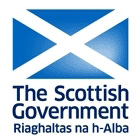A Dictionary of the Older Scottish Tongue (up to 1700)
Hide Quotations Hide Etymology
About this entry:
First published 2002 (DOST Vol. XII).
This entry has not been updated since then but may contain minor corrections and revisions.
Ȝ. Note on the letter.The letter yogh representing the voiced palatal approximant [j].In the early Scots period it varied with y, ȝh and yh but was the dominant spelling form during the Middle Scots period. By the seventeenth century it had given way to the variant y in accordance with English practice. Some texts, apparently following the French usage, used the symbol to indicate a plural, e.g. lettreȝ for lettres. Editions of Scots texts display considerable variation in editorial practice and readers should be cognisant of the editorial policy in each case. In the later Middle Ages ȝ was indistinguishable in written form from z used to represent z and early printers frequently represented it by z, giving rise to the modern spellings of such names as ‘Dalziel’ and ‘Menzies’ and modern pronunciations such as that of ‘Mackenzie’. Other printers have frequently used y for [j].The policy adopted in this dictionary is to normalise z to ȝ in editions where it represents [j] but to leave y as y.
You may wish to vary the format shown below depending on the citation style used.
"ȝ n.". Dictionary of the Scots Language. 2004. Scottish Language Dictionaries Ltd. Accessed 14 Dec 2025 <http://www.dsl.ac.uk/entry/dost/3>


